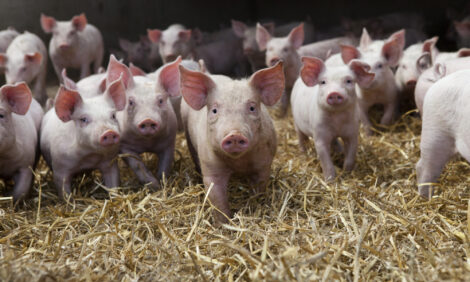



Ractopamine: dealing with zero tolerance in global pork trade
The use of ractopamine can limit trading with other countries. Zoetis offers an approach for producers wanting to to switch production to ractopamine-free.“This really stems from the year-long epidemic with African swine fever in China,” Dr. Daniel Nelson, swine nutritionist with Zoetis, said at the Iowa Pork Congress held in Des Moines, Iowa, early in 2020. “Some reports say that as much as 50% of their herd has been wiped out due to African swine fever. And certainly, the U.S. pork producers and packers would like an opportunity to backfill that supply of pork to China. However, they [China] have a zero tolerance for ractopamine.”
In order for the United States to fulfill the pork supply with China, U.S. pork producers would need to stop using ractopamine. This means that there must be zero - not even a small amount is acceptable. Zoetis has analytical equipment that can measure parts per trillion, indicating the percentage of ractopamine as close to zero as possible.
It is possible for producers to make the transition to a non-ractopamine operation. If they're currently using ractopamine in a group of pigs, Dr. Nelson advises to continue using until that group of pigs has gone to slaughter. With subsequent groups of pigs, producers need to start back at the mill and ensure the mill is producing ractopamine-free feed.
“That entails removing ractopamine completely from the premises,” said Daniel Nelson. “This involves cleaning out micro bins where the ractopamine was, and cleaning out legs, augers, scales, mixing equipment, loadout equipment and fat tanks that might have contained animal fat from pigs or cattle that have been fed ractopamine. Then you need to go out to the barn as well, making sure feed bins are completely empty, feed lines have been flushed with ractopamine-free feed and all the feeders have been completely cleaned out. In some extent, even vacuuming feeders out to make sure the feed is completely gone.”
This type of work is an extensive process that requires a systematic, team approach to complete. Zoetis offers written instructions for completing this process. In addition, they have an online WebEx that's available for customers and producers with experts that go into greater detail on how to get ractopamine out of a production system.
“We can actually go on farms and help people with the process as well,” said Daniel Nelson. “We can collect feed samples and send into our Chicago Heights Analytical Laboratory to measure ractopamine in feed. We offer that service to our customers and that's a way for them to make sure that the procedures that they have implemented are working and that they are producing and feeding racto-free feed.
"We don't currently have a product that can make up that significant improvement in carcass leanness and gain and feed efficiency that ractopamine provided. However, Zoetis does offer bacitracin methylene disalicylate, or BMD, a growth promoter that can be fed in the finishing period and helps improve average daily gain and feed efficiency.”










